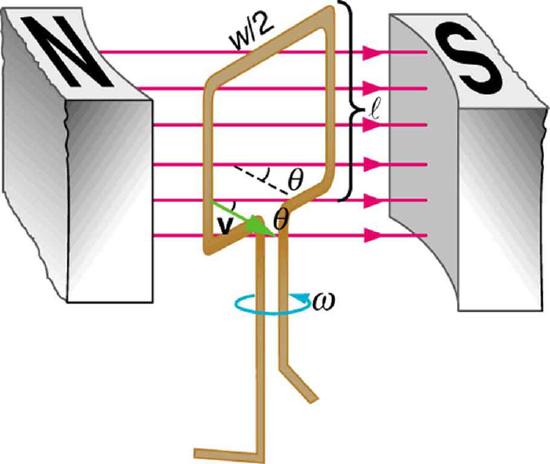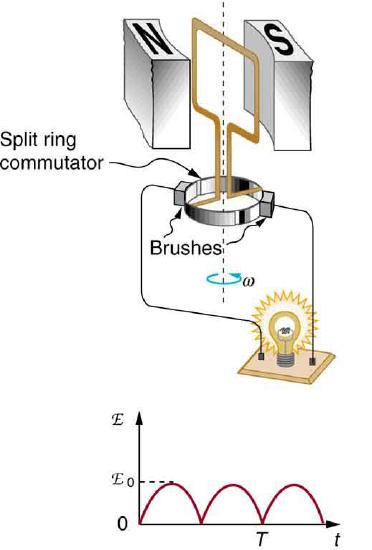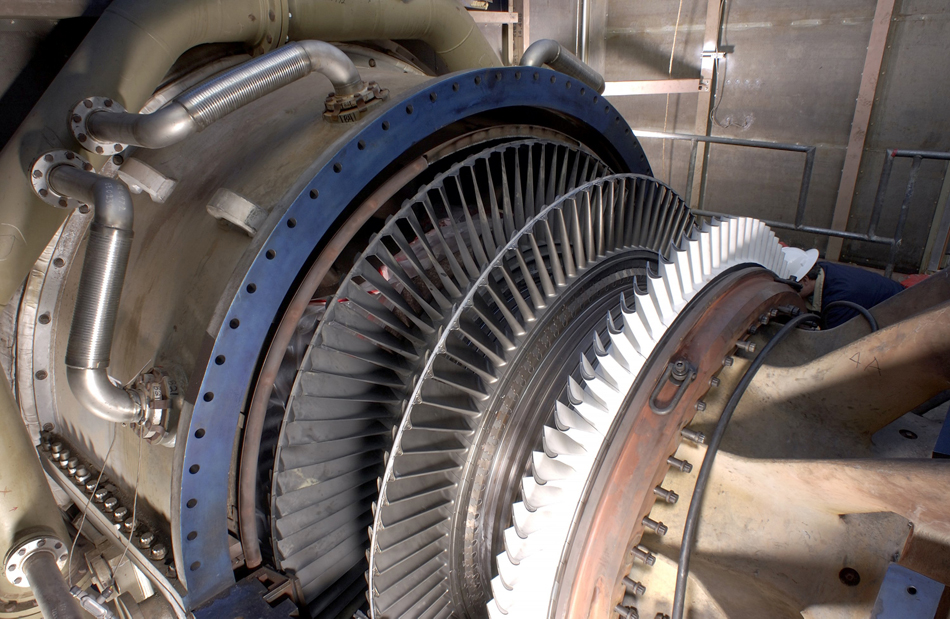10.5: Electric Generators
- Page ID
- 47070
Learning Objectives
By the end of this section, you will be able to:
- Calculate the emf induced in a generator.
- Calculate the peak emf which can be induced in a particular generator system.
Electric generators induce an emf by rotating a coil in a magnetic field, as briefly discussed in "Induced Emf and Magnetic Flux." We will now explore generators in more detail. Consider the following example.
The emf calculated in the example is the average over one-fourth of a revolution. What is the emf at any given instant? It varies with the angle between the magnetic field and a perpendicular to the coil. We can get an expression for emf as a function of time by considering the motional emf on a rotating rectangular coil of width \(w\) and height \(l\) in a uniform magnetic field, as illustrated in Figure \(\PageIndex{2}\).

Charges in the wires of the loop experience the magnetic force, because they are moving in a magnetic field, and a current is generated, which in turn results in an emf across the loop. As the loop turns, the angle between the loop and the magnetic field oscillates continuously between 90 and 0 degrees, and which means the induced emf in the loop also oscillates. As it oscillates, the emf never exceeds a particular maximum value. This is called the peak emf. Figure \(\PageIndex{3}\) shows a graph of emf as a function of time; this corresponds to what is commonly referred to as AC voltage.

The greater the number of coils, the larger their area, and the stronger the field, the greater the output voltage. Additionally, the faster the generator is spun, the greater the peak emf. This is noticeable on bicycle generators—at least the cheaper varieties. One of the authors as a juvenile found it amusing to ride his bicycle fast enough to burn out his lights, until he had to ride home lightless one dark night.
Figure shows a scheme by which a generator can be made to produce pulsed DC. More elaborate arrangements of multiple coils and split rings can produce smoother DC, although electronic rather than mechanical means are usually used to make ripple-free DC.

Figure \(\PageIndex{4}\): Split rings, called commutators, produce a pulsed DC emf output in this configuration.
In real life, electric generators look a lot different than the figures in this section, but the principles are the same. The source of mechanical energy that turns the coil can be falling water (hydropower), steam produced by the burning of fossil fuels, or the kinetic energy of wind. \(\PageIndex{5}\) shows a cutaway view of a steam turbine; steam moves over the blades connected to the shaft, which rotates the coil within the generator.

Generators illustrated in this section look very much like the motors illustrated previously. This is not coincidental. In fact, a motor becomes a generator when its shaft rotates. Certain early automobiles used their starter motor as a generator. In Back Emf, we shall further explore the action of a motor as a generator.
Summary
- An electric generator rotates a coil in a magnetic field, inducing an emf that varies in time
- The faster the rotation, the bigger the peak value of the induced emf
Glossary
- electric generator
- a device for converting mechanical work into electric energy; it induces an emf by rotating a coil in a magnetic field
- peak emf
- the maximum value attained by the induced emf as the coil is rotated in the magnetic field
Contributors and Attributions
Paul Peter Urone (Professor Emeritus at California State University, Sacramento) and Roger Hinrichs (State University of New York, College at Oswego) with Contributing Authors: Kim Dirks (University of Auckland) and Manjula Sharma (University of Sydney). This work is licensed by OpenStax University Physics under a Creative Commons Attribution License (by 4.0).


